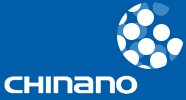With the advent of cutting-edge technologies like 5G mobile communications, big data analytics, and artificial intelligence in recent years, the integration of new display technologies with ultra-high-definition video, flexible, sensing, printed electronics, etc. has led to a burgeoning trend where new display technologies are blossoming and rapidly evolving through generational upgrade. The Forum on Key Technologies and Processes in New Display Devices will be co-sponsored by the Bureau of Personnel, CAS and the Jiangsu Nanotech Industry Innovation & Development Center, and organized by the
Nano-Fabrication Facility at Suzhou Institute of Nano-Tech and Nano-Bionics (SINANO), CAS and Suzhou Nano Technology Development Co., Ltd. The Forum will be held at the Suzhou International Expo Centre from October 23rd to 25th, 2024.
The Forum invites renowned experts specialized in display technologies from universities, research institutes, and enterprises to share their professional knowledge, thoroughly analyze the key points and trends in the industry. Both theoretical training and technical discussion will be held. This Forum is intended to provide an opportunity for relevant personnel in the field to learn and communicate. It is free to attend with limited participants. We welcome college students, R&D engineers and scientific researchers to register and participate.










